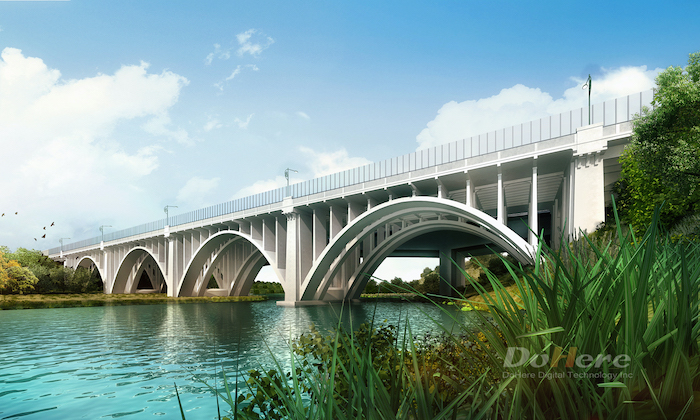
Extreme engineering for Canada’s infrastructure
August 11, 2023
By Joseph Trainor
Projects need to become more resilient.
The phrase ‘extreme architecture’ refers to the design of buildings capable of withstanding major fluctuations in temperature, moisture, wind, etc. The same concept can be extended to ‘extreme engineering’ for the built environment, given the necessity for infrastructure to become stronger, more flexible and more resilient.
As increasing concentrations of carbon in the biosphere accelerate the climate crisis and extreme weather events become more frequent, Canada must bolster core elements of its cities and towns. This poses challenges and opportunities for the engineering profession.
Cost-effective adaptation and remediation will be key. Even if efforts to prevent climate change become fully acceptable to the public and are adopted by voters and governments, there will likely still be several decades of rising temperatures, floods, fires and droughts.
Climate breakdown threats
In today’s climate crisis, the need for carbon rebalancing is not a left-vs.-right issue—rather, it is an existential problem. For about 2,500 years of social and agricultural progress, carbon in the atmosphere was balanced around 285 parts per million (ppm). This surged above 315 ppm in the second half of the 20th century and is now higher than 415 ppm, imperilling all large mammals, along with many insects, birds, reptiles and amphibians.
Before the public understood the gravity of the anthropogenic (i.e. caused by human activity) carbon imbalance, scientists used terms like ‘global warming’ and ‘climate change.’ A better term is ‘climate breakdown.’
Atmospheric warming is just one negative effect of the carbon imbalance. Other global issues include acidification and warming of oceans, drying of forests and rivers, extinctions of insects, birds and mammals, high winds, rising sea levels, melting of glaciers, floods, droughts, fires and reduction of atmospheric oxygen.
In 2021, extreme weather events across Canada resulted in $2.1 billion in insured damages; these do not include uninsured losses and taxpayer costs related to infrastructure. In 2022, that number rose to $3.1 billion.
Natural Resources Canada (NRCan) reports fighting wildfires has cost more than $1 billion in six different years within the past decade. The fires and storms of 2023 indicate such costs will continue to rise.
Humans need to restore the carbon cycle to ensure a sustainable future. Rebalancing carbon and planting billions of trees will be necessary to slow and hopefully reverse the damage.
That process will take decades. In the meantime, nations will need to spend hundreds of billions of dollars on adaptation and remediation, as climate-related problems continue to escalate.

By 2026, climate resiliency will be a requirement in the Canadian Highway Bridge Design Code. Rendering courtesy DH Visualizations.
Strategies for adaptation and remediation
As extreme weather events become more frequent and intense, there is a growing need for innovative engineering approaches to develop infrastructure capable of withstanding cold, heat, high winds, drought and floods.
Robust design involves using advanced materials, reinforcement techniques and structural principles to enhance durability and resilience. Climate-responsive architecture for buildings and other infrastructure incorporates features like passive cooling systems, flood-resistant designs, green roofs and advanced insulation to regulate temperature and reduce energy consumption.
Structures need to be designed to divert or contain floodwaters and protect critical assets. Robust management systems for this purpose include flood barriers, levees and flood control channels.
In regions prone to drought, on the other hand, extreme engineering will focus on such water management infrastructure as reservoirs, desalination plants and efficient irrigation systems. These measures will help ensure a sustainable water supply during periods of scarcity.
As the world transitions toward cleaner energy sources, extreme engineering can play a role in building wind farms, solar power plants and battery energy storage systems (BESSs) to support the transition.
Nations will need to spend hundreds of billions of dollars on adaptation and remediation.
A shift in priorities
As infrastructure is bolstered in response to climate breakdown, demand will increase for civil and environmental engineers, architects, urban planners, landscape designers, construction professionals, project managers, water resource managers, emergency response and disaster recovery experts and a variety of engineers, technicians and installers specializing in solar, wind, geothermal and other renewable energy technologies.
Consulting engineering firms may find a larger share of their business is coming from infrastructure projects. Indeed, annual infrastructure spending in Canada seems likely to quadruple—at least—over the next decade, presenting many opportunities for extreme engineering. As the world continues to adapt, there will likely be a shift toward firms that prioritize sustainability, resilience and environmental stewardship.
On June 27, 2023, Canada’s federal government mandated provinces and territories to include climate resilience planning in their recovery efforts. If they do not comply, they will lose access to emergency and post-emergency funding.
Targets include instituting plans to prevent heat-related deaths in 80% of health regions by 2026, with a goal of eliminating such deaths by 2040. Climate resiliency will be required as part of the three national codes for bridge and highway design, buildings and electricity projects by 2026. Further targets in 2028 and 2030 will require municipalities and provinces to identify potential problem areas for wildfires and institute prevention and mitigation measures.
Structures should be designed to divert or contain floodwaters.
The federal government also plans to create 15 new urban national parks to foster natural cooling in cities. Metropolises account for 70% of carbon emissions, so the more carbon that can be absorbed locally, the better.
Canada is fortunate to have three major centrist parties. Centrism provides the best ecological path forward, with resources required of both governments and the private sector. And a strong carbon rebalancing program could generate full employment in Canada for the next three to four decades.
Rebalancing carbon to a range of 275 to 295 ppm will require the phasing out of carbon combustion engines and, as mentioned, the planting of billions of trees and other oxygen-producing, carbon-absorbing plants. If engineers plan for 10 to 12 billion humans living peacefully on a non-toxic, sustainable planet, everyone will collectively reap the benefits of beneficent foresight.
Joseph Trainor is director of business development for DH Visualizations, which specializes in energy, transportation and transit infrastructure renderings for engineers. For more information, visit www.dhrendering.com.
